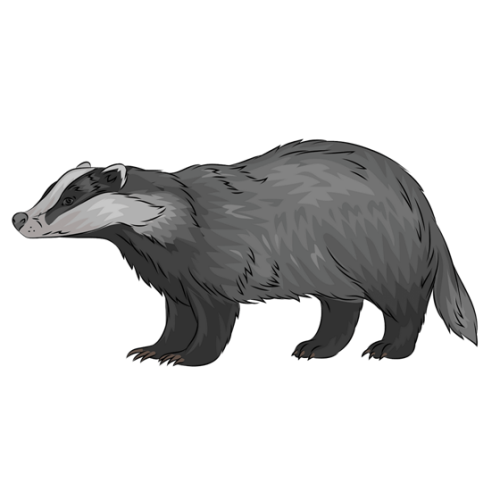History of... Badgers
Name:
European Badger
Scientific Name:
Meles Meles
Family:
Mustelifae
Conservation Status:
Least Concern
Habitation:
Mixed woodland, suburban areas and urban parks.
Global Location:
The UK, most of Europe and some parts of West Asia
Discovery:
The earliest traces of badgers in Britain have been dated back to three quarters to half a million years ago
Badgers have black bodies and their head it white with two black stripes that strt at the top lip and go along the head, over the eyes and ears, finishing at the neck. The black lines getting gradually wider as they go along head.
Although badgers are generally thought to be carnivore, they are actually omnivore as the eat a wide range of meat and vegetation Including: insects earthworms, cereals, fruit, rabbits, mice, rats, voles, shrews, moles and hedgehogs.
Adults measure 25–30 cm (9.8–11.8 in) high and 60–90 cm (24–35 in) long. Males (or boars) can weigh more than females (sows). Their weights vary seasonally, growing from spring to autumn and reaching a peak just before the winter. During the summer, European badgers commonly weigh 7–13 kg (15–29 lb) and 15–17 kg (33–37 lb) in autumn.
Badgers are known for their strong and sturdy body, with a broad head, and a pointed nose, short and stocky legs, which are perfect for digging.
They create dens, burrows and tunnels to escape predators, store food or raise young which are often multi-chambered and can be quite extensive, stretching up to 30 meters in length. The burrows, which are called setts, can be inhabited by several badger families.
A quite surprising fact is that these setts can also have foxes and rabbits living in there. Although rabbits try to inhabit smaller tunnels to avoid the badgers.
Badgers are able to breed throughout the year and are usually mature at 9 to 15 months of age. Normally only the dominant sow is allowed to breed when there is a larger group living together. Boars typically mate with only one female in their life, but sows are known to mate with more than one male. Gestation generally lasts 7 weeks with between 1 and 5 cubs born in each litter. Boars will raise litters from different boars and colonies, but dominant sows have been known to kill litters from subordinate sows.
Badger cubs are usually 12 cm (4.7 in) long and weigh 75 to 132 g (2.6 to 4.7 oz).
Their eyes open at four to five weeks. Eemerging from their setts at eight weeks of age, and begin to be weaned at twelve weeks.
Subordinate females assist the mother in guarding, feeding and grooming the cubs.
Badgers generally hibernate between and begin to prepare for winter sleep in late October to mid-November and emerge from their setts in March and early April.
In areas such as England and where winters are less harsh, badgers either forgo winter sleep entirely or spend long periods underground, emerging in mild spells.
Badgers can live for up to about fifteen years in the wild. 


